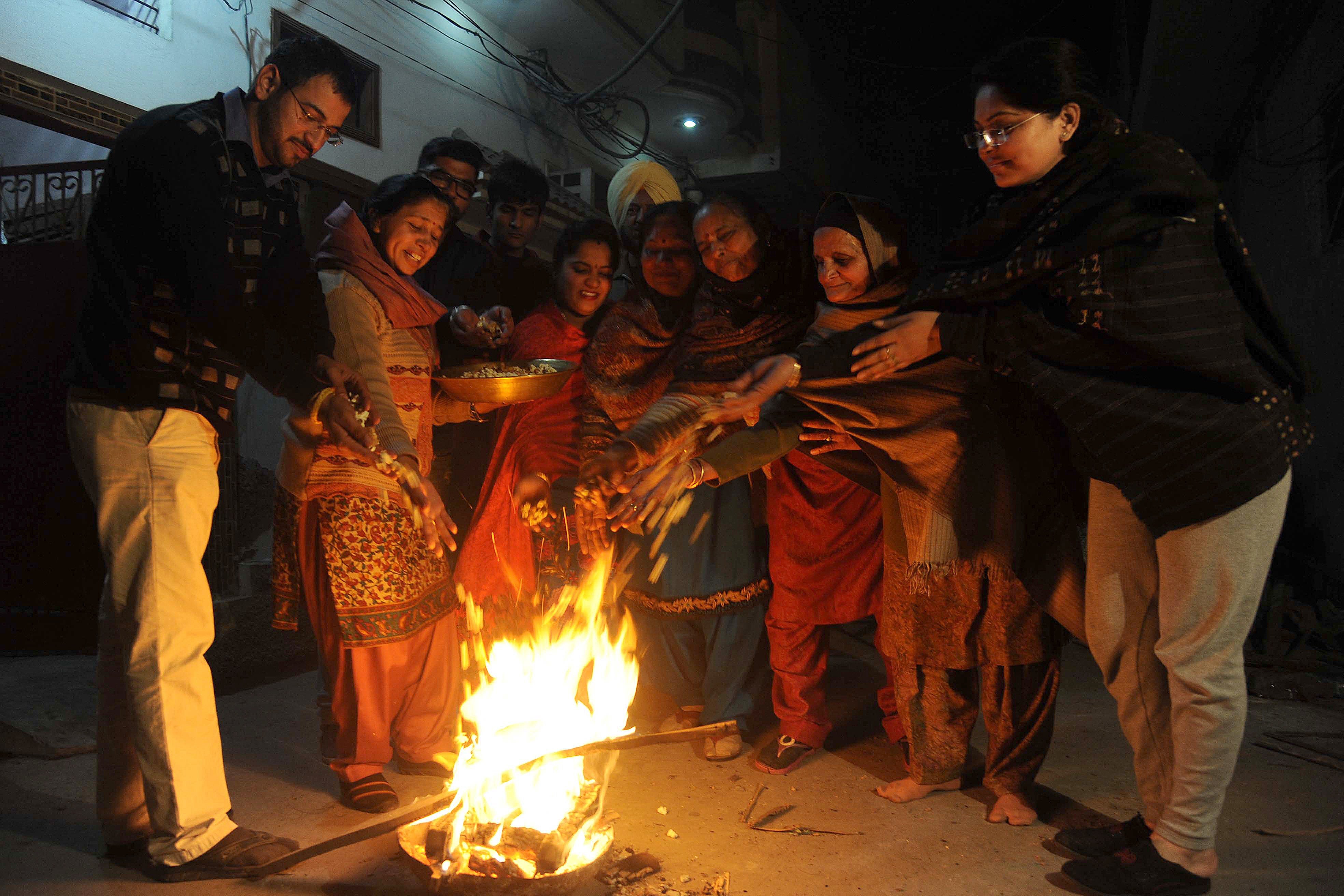
India celebrated the festival of Lohri on Thursday, a traditional winter folk festival or a popular harvest festival for farmers that is primarily celebrated in the region around India’s northern Punjab state.
It is observed a night before Makar Sankranti, another harvest festival.
The significance, folklores, and legends about this festival, which typically falls on 13 January every year, are all linked to the Punjab region.
How is Lohri celebrated?
Throughout the country, Lohri is celebrated by lighting bonfires, eating festive food, dancing and distributing gifts.
In homes that have recently had a marriage or childbirth, Lohri celebrations reach a higher pitch of excitement with families hosting big gatherings.
People wear their brightest clothes for the festival and dance the Punjabi folk dances of bhangra and gidda to the beat of the dhol, a double-sided Indian drum popular in Punjab.

Sarson da saag and makki di roti – cooked mustard green leaves and roti made from cornmeal – are usually served as the main course at a typical Lohri dinner.
A bonfire is also lit at sunset, in which people toss sesame seeds, jaggery and sugar cubes. Some people perform a prayer and go around the fire as a mark of respect to the natural element.
In several areas in Punjab, teenage children collect logs for the bonfire from around their neighbourhood 10-15 days before Lohri.
In some places, they also collect grain and jaggery to sell them and divvy up the sale proceeds among themselves.
Because of the Covid pandemic, large Lohri celebrations have been suspended in multiple states.
Families, however, have still managed to celebrate the festival at a smaller scale inside their homes and over video calls.
What has Lohri got to do with winter solstice?
Many people believe Lohri marks the passing of the winter solstice and is a traditional welcome for longer days and shorter nights.
It is also believed that the festival marks the sun’s journey to the northern hemisphere.
What is the famous folklore tied to the festival?
The famous folklore tied to the festival revolves around a local folk legend known as Dulla Bhatti, who is celebrated for his exploits in resisting the reign of Mughal emperor Akbar.
The character is popularly referred to as the “Son of Punjab”.

One story involving Dulla Bhatti centres around two girls he saved from slavery, called Sundri and Mundri, who have become the inspiration behind a popular folk song celebrating them, called “Sundri Mundri.”










